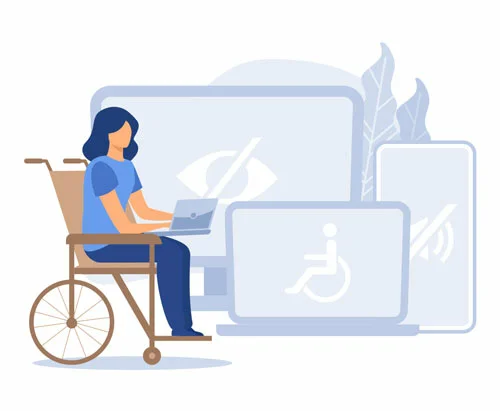2025 is just around the corner, and with it comes a fundamental change in European regulations on digital accessibility. The European Accessibility Act (EAA) is a European Union directive that sets mandatory accessibility standards for digital products and services in all member states. This legislation is designed to make digital content accessible to everyone, including those with visual, hearing, cognitive or motor disabilities.
What does the European Accessibility Act provide?
The EAA sets clear accessibility requirements for websites and apps across many service categories, including e-commerce, online banking, video content, education portals, transportation, and more. The main goals of the EAA are:
-
- Social inclusion : ensuring that people with disabilities can access the same digital content offered to the public.
-
- Compliance : align accessibility requirements for businesses across Europe to reduce digital barriers and promote equal opportunities.
Among the specifications, the regulation refers to the WCAG 2.1 guidelines (Web Content Accessibility Guidelines) as a compliance standard, requiring companies to improve several aspects:
-
- Design and User Interface – Accessible design for people with different needs (such as visual or cognitive).
-
- Technology Compatibility – Ensure that content is accessible via assistive technologies, such as screen readers.
-
- Content Navigation and Structuring – Easily usable and well-organized content.
-
- Contrast and Colors – Ensure readability for visually impaired users through adequate color contrasts.
What are the implications of EAA?
Starting in 2025, any company that does not comply with the EAA guidelines could face fines and penalties, as well as risking damage to its image and reputation. Furthermore, ensuring accessibility is not only a regulatory issue, but also an ethical one: it means being inclusive and making your digital services accessible to a wider audience.
How to Check and Adjust Your Website
Ensuring you are compliant with the EAA means taking a number of practical steps, including:
-
- Accessibility Audit – An in-depth analysis to identify areas for improvement.
-
- Technical and Design Changes – Adapt layout, content, and code to ensure accessibility.
-
- Assistive Technology Testing – Checking for compatibility with tools such as screen readers and magnification software.
Not Just Compliance: The Benefits of an Accessible Site
Meeting accessibility standards not only ensures compliance with European regulations, but also offers significant benefits in terms of visibility and SEO, improving user experience and reaching a much larger user base.
How Mind-Mercatis Supports the Adaptation Process
Mind-Mercatis offers comprehensive and customized support to help companies comply with the European Accessibility Act in time for 2025. Our team of digital accessibility experts follows every step of the process: from the initial site audit to the technical and design changes needed to achieve compliance.
With a structured methodology and advanced testing services, Mind-Mercatis ensures that every element of the site is in line with WCAG 2.1 standards . In addition, we work alongside companies to optimize the user experience, maximize online visibility and minimize the risk of non-compliance. Choosing Mind-Mercatis means preparing for the future of the web, ensuring an accessible, inclusive and fully compliant service with European regulations.


